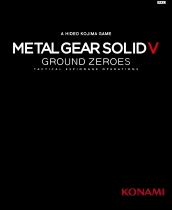
Metal Gear Solid V: Ground Zeroes is Better Than Metal Gear Solid V: the Phantom Pain
As it turns 10, I want to look back over Metal Gear Solid V: Ground Zeroes and the fact that I think it is genuinely a superior title to Metal Gear Solid V: The Phantom Pain. That’s not to say The Phantom Pain isn’t a fun experience, yet the sheer concentrated stealth action of Ground Zeroes hits a spot in my brain that the following title never quite reached.
For those unaware, Ground Zeroes was a small title, functioning as a short prequel in the MGSV duology. Initially, this prequel was met with some controversy, considering its smaller nature, which led people to feel it was more of a demo which shouldn’t have been sold for the price it was at launch; despite this, however, it was received positively. Functionally, it could have easily fit into the later game as an introductory section to the game, as the gameplay mechanics are the same in both titles.

Instead of the sprawling sandbox maps of Afghanistan and North Africa as seen in The Phantom Pain, Ground Zeroes takes place within Camp Omega, a relatively small military base. You’re given the simple objective of rescuing Chico, a former child soldier, along with learning whether or not Paz, another of Big Boss’ former associates, still lives and if she can be rescued too. This isn’t a complex couple of tasks, and in the initial mission, it doesn’t get any deeper than this, but that’s exactly what I enjoy so much about this title specifically — Ground Zeroes is incredibly concise and super dense. The small map of Camp Omega is well designed for sneaking through in a variety of ways, keeping it from getting too old too quickly. This smaller scale reminds me a lot of Shadow Moses, the setting of the first game. It’s a more dense and focused stealth activity instead of the large freeform sandbox of The Phantom Pain.
I absolutely cannot deny the merit of the sandbox stealth experience, but I have more of a fondness for the puzzle-like encounters of solving smaller individual stealth sequences. Ground Zeroes adds a bunch of extra content in the form of Side Ops and Extra Ops, alternative missions taking place within Camp Omega. Most of these are simple, but change up the formula in a satisfying way, especially the two Extra Ops: Deja Vu and Jamais Vu. The first of which has you recreate scenes from Metal Gear Solid, along with some incredibly charming visuals. Most of my distaste for the later title comes from the story and the pacing. Jamais Vu, however, is the best of the bunch, putting you in the shoes of Raiden, tasked with dispatching a group of body snatchers. Not only is this a complete turn from the much more grounded missions, but it is also a very fun callback to one of Kojima’s earlier works, Snatcher.

While I do prefer the story of The Phantom Pain, it’s also highly flawed compared to the much simpler story of Ground Zeroes; the story pacing is a little messy in the former and also feels somewhat unfinished. The pacing and mission structure don’t help either, with many sections feeling like filler or having you replay harder versions of missions to finish the main story. I was also not particularly a fan of the base management systems. While I enjoyed the depth they added to gameplay and exploration, along with its connections to the overarching narratives, I just generally didn’t see myself engaging or wanting to engage with this plethora of systems.
At the end of the day, it comes down to the way each title’s gameplay is framed: the sandbox-focused experience of The Phantom Pain or the denser and small-scale stealth of Ground Zeroes. I prefer the way it feels in the latter, and as I don’t care for many of the other additions in the former, it makes Ground Zeroes feel all that more appealing.










COMMENTS